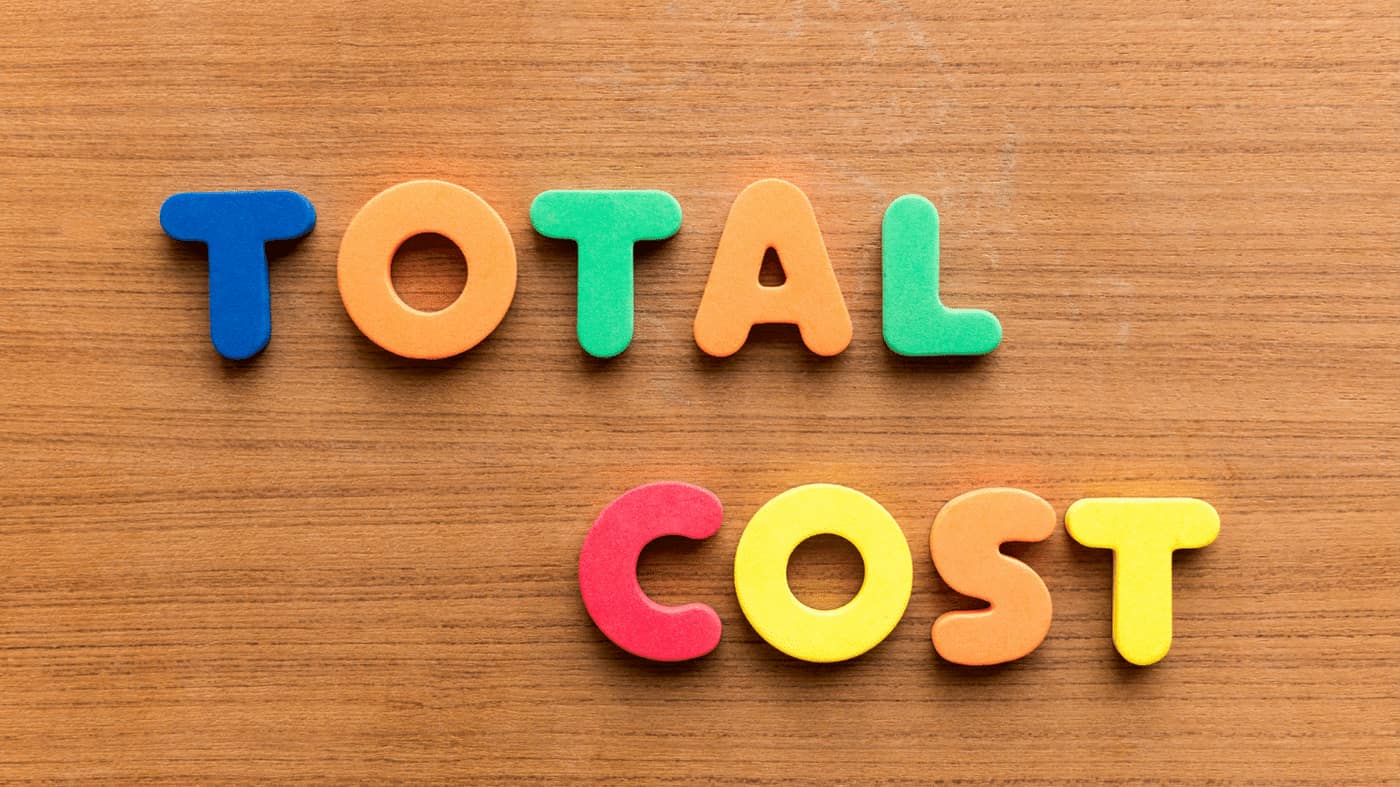What Is Amazon TACoS? Total Advertising Cost of Sale in 2024
For Amazon sellers, mastering Amazon TACoS, or Total Advertising Cost of Sale, is key to understanding the balance between advertising spend and sales revenue. This metric reveals not just sales from ads but also includes organic sales, offering a full view of your advertising's effect on overall sales health.
Dive into your TACoS for smarter ad strategies on Amazon—it tells you if your advertising is effective and how it's affecting your revenue. A high TACoS could mean it's time to change your approach, while a low one suggests a good balance. Want to use TACoS to boost business growth and maintain profits? Read on for actionable insights.
Understanding Total Advertising Cost of Sale (TACoS)
Total Advertising Cost of Sale, or TACoS, reflects the impact of your advertising efforts on overall sales revenue. It tracks the cost of ads against the entirety of your sales, both advertised and organic.
Defining TACoS
TACoS represents the share of your total sales that are attributable to your advertising spend. Unlike metrics that only consider the direct sales from ads, TACoS incorporates all revenue to offer a comprehensive view.
It accounts for the broader effect advertising has on your brand's sales performance, including the potentially lifted organic sales.
TACoS vs. ACoS
While ACoS (Advertising Cost of Sale) calculates the ratio of ad spend to the sales generated strictly from those ads, TACoS expands the scope. TACoS includes total sales which is the sum of ad-driven and organic sales.
This distinction is critical as it demonstrates the indirect value advertising adds beyond immediate returns by potentially boosting organic sales metrics.
How to Calculate TACoS
To calculate TACoS, apply the following formula:
-
TACoS = ( \frac{Ad Spend}{Total Sales} ) x 100
Essentially, you divide your total ad spend by the total sales revenue (including both ad-driven and organic sales), and then multiply by 100 to get a percentage.
This calculation will give you the percentage of your total sales revenue that was spent on advertising.
For example, if you spent $1,000 on ads and generated $10,000 in total sales:
-
TACoS = ( \frac{1,000}{10,000} ) x 100 = 10%
In this scenario, your advertising cost constitutes 10% of your total sales revenue.
Understanding and monitoring your TACoS can help optimize your advertising strategy to improve the overall effectiveness of your ad campaigns.
The Significance of TACoS for Amazon Sellers
For you as an Amazon seller, understanding Total Advertising Cost of Sale (TACoS) is vital as it directly relates to both the efficiency of your advertising spend and the broader health of your business on the platform.
TACoS as a Metric for Business Growth
When you're looking to assess the impact of advertising on your overall sales revenue, TACoS is one of the more illuminating metrics at your disposal.
Different from the more narrow ACoS (Advertising Cost of Sale), which only considers sales directly generated from ads, TACoS provides a holistic view by taking into account your entire sales revenue—inclusive of both ad-driven and organic sales.
By keeping an eye on your TACoS, you're able to gauge advertising efficiency in the context of your full financial picture.
A stable or declining TACoS generally suggests that organic sales are growing at a healthy pace relative to ad spend. On the other hand, an increase in TACoS might signal a need to adjust your advertising strategy as your reliance on paid campaigns could be growing stronger.
Influence on Product Listings and Organic Sales
The performance of your product listings on Amazon is significantly intertwined with organic sales—sales not directly attributed to paid ads.
TACoS can provide insight into the underlying health of these listings. Ideally, effective advertising will not only drive immediate sales but also improve the ranking and visibility of your product listings, thus bolstering organic sales over time.
By analyzing TACoS and implementing data-driven optimizations, you can improve the performance of product listings, possibly leading to an increase in category ranks and subsequent organic sales.
This boosted organic performance lessens your dependence on ads and could potentially reduce your TACoS, signifying greater profitability due to a more balanced advertising to sales revenue ratio.
Optimizing TACoS for Enhanced Visibility and Efficiency
To improve your Amazon TACoS, focus on refining keyword strategies and managing your advertising budget effectively.
Role of Keyword Research and Optimization
Proper keyword research is foundational for maximizing visibility and enhancing advertising efficiency on Amazon.
Your goal is to identify high-converting keywords with lower competition to achieve better placement and increased sales.
This not only boosts your product visibility but also improves the profitability of your ads.
-
Target specific keywords that shoppers are likely to use when searching for products in your category.
-
Optimize listings with those keywords to increase organic reach and complement your paid ad strategy.
-
Use tools like Amazon Keyword Planner to find keywords with high search volume and relevance to your product.
Managing Advertising Spend for Better TACoS
Efficient management of your advertising spend directly affects TACoS and, by extension, your profit margin.
As an advertiser, your aim should be to spend your ad budget in a way that leads to an overall increase in sales, both organic and ad-driven.
-
Set a budget: Decide on an advertising budget that aligns with your profit goals.
-
Monitor spending: Track your ad spend frequently to avoid overspending on inefficient campaigns.
-
Adjust bids: Modify your keyword bids based on performance data to optimize costs.
Evaluating Amazon TACoS Impact on Revenue
Amazon TACoS, or Total Advertising Cost of Sale, is a metric you can use to understand the relationship between your advertising spend and total revenue. A proper analysis can inform decisions on profitability and strategic pricing.
Analyzing the Impact of TACoS on Profitability
Your TACoS indicates the percentage of revenue consumed by advertising costs. If the TACoS is high, it suggests that advertising is eating a significant portion of your revenue, potentially squeezing your profit margins.
-
Low TACoS: Indicates effective advertising, where ad spend is a small portion of total revenue.
-
High TACoS: Points to expensive advertising relative to income, which can indicate a need to optimize ad spend.
Assessing Trends:
Watch for TACoS trends over time to decide when to scale up your advertising spend or rein it in.
If TACoS is increasing but your total revenue is not, this might indicate that the campaigns are less effective, prompting a need to review your advertising strategy.
Product Pricing and Promotions
Competitive Pricing:
Your product pricing affects TACoS. If your prices are competitive, you may see improved organic sales, which can dilute the TACoS.
Conversely, if your pricing is not aligned with market expectations, even high ad spend might not yield the expected increase in sales.
Incorporating Promotions:
Promotions can temporarily increase sales and affect TACoS.
When evaluating TACoS during promotional periods, consider the temporary spike in sales in the context of the promotion's additional costs, and assess whether it contributes to long-term profitability.
-
Promotion Impact Example:
-
Before Promotion: TACoS = 15%
-
During Promotion: TACoS = 10%
-
Interpretation: The promotion may have temporarily improved TACoS, but assess if there's long-term value.
-
Strategies for Reducing High TACoS
High TACoS can drain your profits by consuming a significant chunk of your revenue in advertising costs. The key to reducing high TACoS lies in optimizing your Amazon campaigns to improve efficiency and sales conversion while controlling ad spend.
Effective Negative Keyword Use
To make your advertising campaign more efficient and reduce TACoS, it's critical to remove keywords that do not convert. This involves analyzing search term reports for your paid campaigns to identify and add irrelevant or underperforming terms to your negative keywords list.
By doing so, you prevent your ads from showing up in those irrelevant searches, thereby improving your campaign’s effectiveness and potentially increasing your conversion rate.
-
Review search term reports regularly
-
Identify non-converting terms
-
Add them to your negative keywords list
Leveraging Customer Reviews and Ratings
Customer reviews and ratings are pivotal in establishing product credibility and can directly influence your conversion rate.
Encourage satisfied customers to leave positive reviews to boost your product's visibility and appeal.
High-quality, positive reviews signal product relevance and user satisfaction to potential customers, which can result in improved organic rankings and lower TACoS over time.
-
Request reviews from satisfied buyers
-
Monitor and respond to customer feedback
-
Use high ratings as leverage in ad copy to enhance credibility
Also read: How To Legally Get More Product Reviews In Amazon
How To Maintain a Low TACoS
Maintaining a low Total Advertising Cost of Sale (TACoS) is vital in enhancing your long-term growth and advertising efficiency on Amazon. By focusing on strategic ad investments and understanding your performance data, you can make informed decisions that keep TACoS manageable.
Implementing A/B Testing for Ad Efficiency
A/B Testing, also known as split testing, is an essential tool for optimizing your advertising investment.
By comparing two versions of an ad campaign, you identify which elements resonate best with your audience.
Follow these steps to execute effective A/B testing:
-
Create two versions of your advertisement, varying a single element such as the headline, image, or call-to-action.
-
Run each version separately at specific period of time, ensuring that they target the same audience and under the same conditions.
-
Analyze the performance data, looking for metrics like click-through rate (CTR) and conversion rate.
-
Select the most efficient version, the one that yields higher performance with lower investment.
-
Implement the winning strategy, using the insights to inform your future advertising decisions.
Prioritize iterations that show a clear benefit in reducing TACoS while maintaining or increasing sales volume.
Read more about it here: What Is Amazon A/B Testing? Guide to Optimize Your Online Sales.
Understanding Seasonality in TACoS Management
Adjusting your Amazon strategy according to seasonality can help maintain a low TACoS.
Seasonal trends can significantly affect both your organic sales and the performance of your ads.
Here's how to manage seasonality:
-
Track historical sales data to identify peak times for your products.
-
Increase ad spend ahead of expected high traffic to maximize visibility.
-
Scale back spend during slower periods to avoid unnecessary costs.
-
Anticipate changes in customer behavior and adjust your campaigns accordingly.
Systematically reviewing your TACoS against seasonal trends can help you allocate your advertising budget more effectively. This will help you avoid spikes in TACoS and support steady business growth.
Conclusion
Amazon TACoS is a critical measure for sellers to understand how well their advertising spend is working. It looks at ad spend in relation to all sales, not just those from ads. This helps you make smart changes to your ad strategy and keep your business profitable.
Knowing how to use Amazon TACoS is key, no matter if you're just starting or trying to improve your sales. It helps you see if your ads are working and guides you on where to go next. A low TACoS usually means your business is doing well with lots of regular sales, but it might also mean you can spend more on ads to grow even more. Use TACoS to help steer your Amazon business towards ongoing success.
Optimize your Amazon PPC and boost profitability with Scale Insights. Their tailored PPC management tools help fine-tune campaigns and budgets more effectively. Check out their plans to take your Amazon advertising to the next level.
Frequently Asked Questions
What is a good TACoS on Amazon?
A good TACoS on Amazon typically ranges between 10% to 15%, but this can vary based on the industry and your business goals. A low TACoS indicates that a significant portion of your sales comes from organic (non-ad) sources, which is generally favorable. However, the definition of a 'good' TACoS can differ depending on whether your focus is on growth or profitability.
Why are TACoS important on Amazon?
TACoS are important on Amazon because they give sellers a comprehensive view of how advertising spend affects overall sales, not just sales resulting from ads. This metric is crucial for understanding the bigger picture of your business's health and can help in making strategic decisions about where to allocate your advertising budget.
What is the difference between TACoS and ACoS on Amazon?
The difference between TACoS and ACoS on Amazon lies in the sales considered for calculating these metrics. ACoS, or Advertising Cost of Sale, measures the efficiency of your ads by showing the ratio of ad spend to the sales directly generated from those ads. TACoS, on the other hand, takes into account the total sales revenue, including both organic and ad-driven sales, offering a broader view of advertising effectiveness.
How much ACoS is good?
A good ACoS on Amazon depends on your product, category, and profit margins; however, an ACoS of around 15% to 30% is generally considered healthy. A lower ACoS means you're spending less on advertising for each dollar of sales, which could be ideal for profitability. However, if the goal is to gain market share or launch new products, a higher ACoS may be acceptable as part of a broader growth strategy.



 Scale Insights Team
Scale Insights Team




